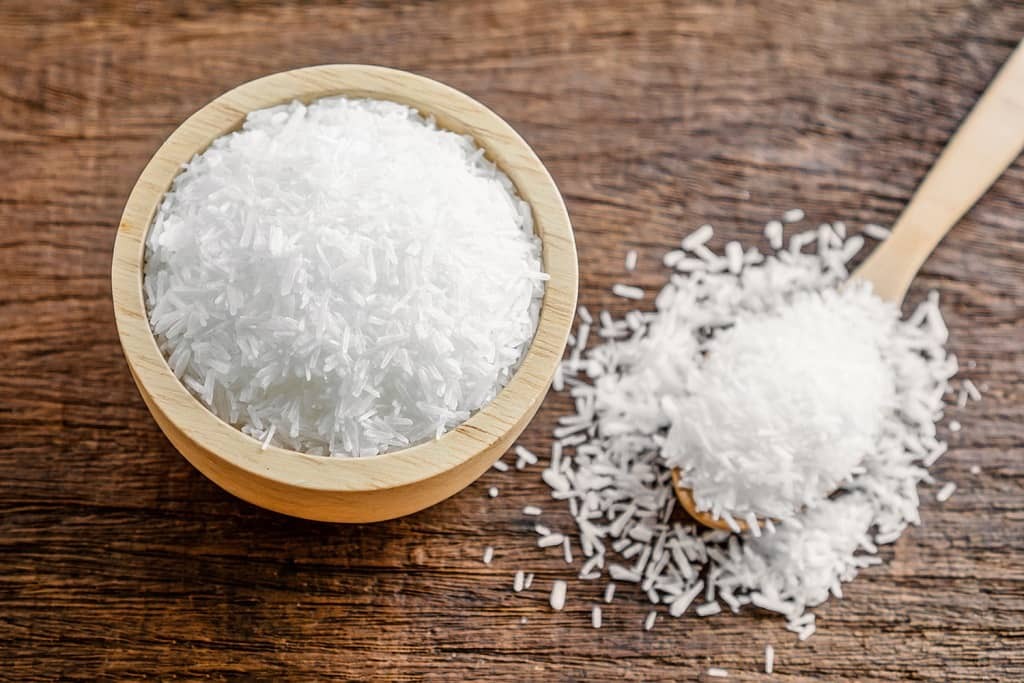Monosodium glutamate, or MSG, is a well-known name in the food industry. It is the source of the unique umami taste that has been a popular sensation among the world’s foodies for the last few decades.
This umami taste is a savory, meaty broth-like flavor that gives a long-lasting aftertaste, thus distinguishing it from other traditional tastes.
Despite such a huge craze all around the world, MSG has seen its highs and lows in the last few decades. Yet, it has managed to keep up with its charisma for so long.
However, there are a few exciting facts people are still unaware of about MSG, which I will be discussing in this article. Keep reading…
What is Monosodium Glutamate (MSG)?
Monosodium glutamate (MSG) is the sodium salt of the glutamate amino acid. Its chemical composition is C5H8NO4Na and is chemically named sodium 2-aminopentanedioate.
Its most important and crucial use is that it acts as a great food additive and flavor enhancer in the food industry. It’s well known for its ability to enhance meaty flavors in sauces, broths, and many other food items.
Glutamic acid is one of the most abundantly found amino acids in nature.
MSG is naturally found in several foods like meats, cheeses, tomatoes, etc.
Nowadays, MSG is synthesized by fermenting starch, sugar, beets, and sugar cane instead of glutamate MSG extraction from seaweed broth.
Primarily, MSG is used as a substitute for common salt. It is used as a food seasoning and is a permitted food additive in the food industry. It not only adds umami flavor to the dish it has been added to but also balances the perception of other tastes.
Discovery Of MSG
It was not until 1908, when a Japanese biochemist named Kikunae Ikeda, while having his daily meal, realized that the kombu seaweed he was trying that day had a distinct flavor than the till then known tastes.
Through a series of research tests, he discovered that the unique taste was a blend of both sweet and salty tastes with a savory flavor. He named it the fifth taste, “umami.”.
Later, with further research, it was discovered that “glutamate” is the source of the umami flavor. Kikunae tried to isolate and copy the savory taste of kombu, during which it was first prepared.
MSG balances the perfect blend of other tastes. Monosodium glutamate is naturally found in a number of foods, like tomatoes, meats, and cheeses.
Now, after this quick look at what monosodium glutamate is, let’s move forward and start with our list of interesting, unknown facts.
Interesting Facts You Should Know About
- MSG is the white-colored crystalline solid; it’s an odorless chemical compound. Its high-water solubility characteristic is 740 g/liter.
- Kikunae Ikeda isolated glutamate from seaweed to produce a crystallized salt form of glutamate, which combined one molecule of glutamate with the ion sodium to make it tastier.
- Glutamate is the most abundant amino acid found in nature, and it’s one of the 20 amino acids that make up proteins in the human body.
- As glutamate is produced as a part of normal metabolism, it is considered a non-essential amino acid, which means we do not need to get it from food.
- The human body synthesizes about 50 grams of glutamate each day and stores about 4.5 pounds of glutamate in major organs like the brain, muscles, kidneys, and liver.
- Humans need about 10 to 20 grams of glutamate each day, mostly from protein-containing foods like meat, cheese, etc.
- Whether consumed through food or MSG, glutamate is metabolized in the same way.
- MSG separates into two parts, namely, glutamate and sodium, as they enter the mouth.
- Glutamate binds to its receptors to elicit the umami or savory flavor sensation.
- More glutamate receptors are found in the stomach, which triggers the activation of the vagus nerve. This nerve notifies the brain that protein-rich foods have entered the stomach, and then the brain signals the stomach and intestines to prepare for protein digestion.
- Glutamate enters the small intestine, where over 95% of the glutamate is used up. The remaining 5% gets absorbed into the bloodstream and delivered to cells to help with metabolism.
- The brain also produces glutamate, which it uses as a neurotransmitter.
- The glutamate we eat doesn’t affect the amount of glutamate in our brain. This is because the glutamate we get from food is almost entirely utilized during its journey through the gastrointestinal tract.
- The blood-brain barrier prevents the small amount of glutamate in our bloodstream from entering the brain.
- Glutamate is either bound, or, in other words, it’s attached to other amino acids in the form of a protein, or free by itself.
- The freer glutamate there is, the more umami flavors a food will have.
- Processes like ageing or ripening will increase the amount of free glutamate in the food.
- Seasoning food with MSG also increases free glutamate, while some foods are high in free glutamate.
- A breastfed infant consumes freer MSG, which is less than 10% of the glutamate we consumed.
- MSG is a tool to help people eat less salt or sodium chloride, thus preventing high blood pressure, which may lead to hypertension.
- Not only does MSG add flavor, but despite having sodium in its name, MSG contains three times less sodium by weight than table salt.
- Increasing glutamate content of foods while decreasing salt in a recipe can reduce the overall sodium content by up to 40%
Summary
The entire article can be summed up by noting down crucial takeaways from the article
- Glutamate is the amino acid responsible for the flavor of umami. It plays a vital role in digestion by signaling for protein digestion and fueling the gastrointestinal tract cells.
- Our bodies produce glutamate, and it’s also present in a variety of whole foods
- Food seasonings can also add Glutamate with the help of MSG
- In the saliva, MSG separates into glutamate and sodium, which is why the body doesn’t differentiate between the glutamate in umami seasoning and the glutamate in everyday foods
- It is a helpful tool for lowering the amount of sodium people consume



